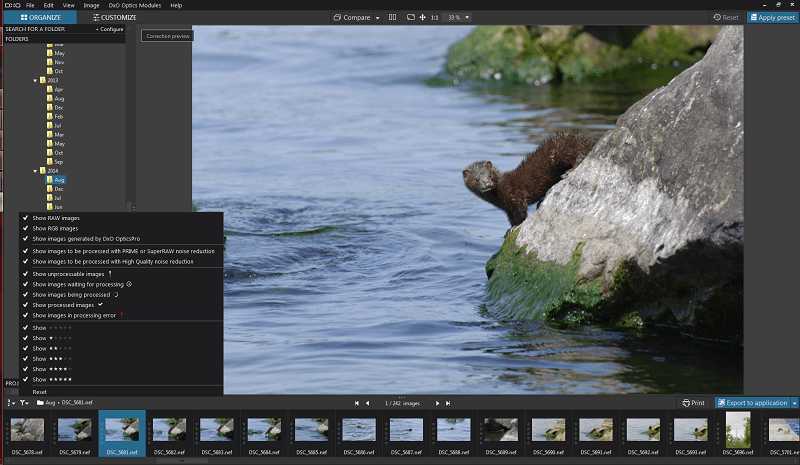

If not, you must input it manually (by guessing the distance from the camera to the subject) for maximum optical correction. The zoom tool provides before and after magnified views for precise eyedropper white-balance correction and previews of other adjustments you've made.ĭepending upon your camera and lens, EXIF information may or may not display focus distance. The histogram has buttons for displaying highlight and shadow clipping you use the tone curve or exposure compensation for adjusting exposure. The palettes are docked but can be moved about for convenience. And Expert Controls gives users total command over all correction tools.Īpplying the Fully Auto mode is simple and straightforward, as are the more advanced modes for experienced users. Key Controls governs corrections for white balance, hue/saturation/brightness, optics, exposure compensation, and noise, and each can be applied manually or automatically. But changes are not visible until after all corrections have been applied. With a single mouse click, Fully Automatic instantly applies all corrections that the diagnostic algorithms and presets report it needs. Next, you select the operating mode: Fully Automatic, Key Controls, or Expert Controls. But you can use (as well as toggle between) any other viewer you wish. The viewer works only with images already processed, which greatly diminishes its value as a working tool. Depending upon the mode, DxO's viewer lets users display the file being worked on as either a single picture or in before/after or after/before side-by-sides.


The DxO viewer is a separate screen for displaying full-size images. Though Optics Pro lets users select three sizes for displaying thumbnails, there's no zoom slider for thumbnail size. The first step is selecting the images you wish to process and loading them into DxO's contact sheet–like interface. That means you need to resist the temptation to rotate images or apply copyright notices to your photos before bringing them into Optics Pro. Since Optics Pro does not work on any file in which EXIF data has been previously modified, it must always be the first image-processing utility that you apply to your images. It can also display a composite histogram (with buttons to show clipping in the highlights and shadows) and EXIF data (including two blank fields for adding custom artist and copyright information).
DXO OPTICS PRO REVIEW PLUS
Optics Pro contains image-processing tools and options to correct almost any problem you can think of: lens aberration (pincushion and barrel distortion, vignetting), color and exposure (sliders, numbers, and a tone curve for selecting color temperature, exposure compensation, hue, saturation, lightness), lighting (white point, black point, gray point, preserve shadows, local contrast, global contrast), noise (luminance, chrominance, and impulse noise correction, plus a gray equalizer), sharpening (a slider or unsharpen mask), and output (color space, image size, rename suffix, directory, a quality slider, as well as JPEG, 8-bit or 16-bit TIFF, or Adobe DNG formats).

The program offers a variety of output options, and it works on both 8-bit and 16-bit RAW files, as well as on JPEG files from many camera models. It can be set for a user's skill level and for single-image or batch processing. There are a host of improvements in the new version.
DXO OPTICS PRO REVIEW SOFTWARE
Best Malware Removal and Protection Software.


 0 kommentar(er)
0 kommentar(er)
